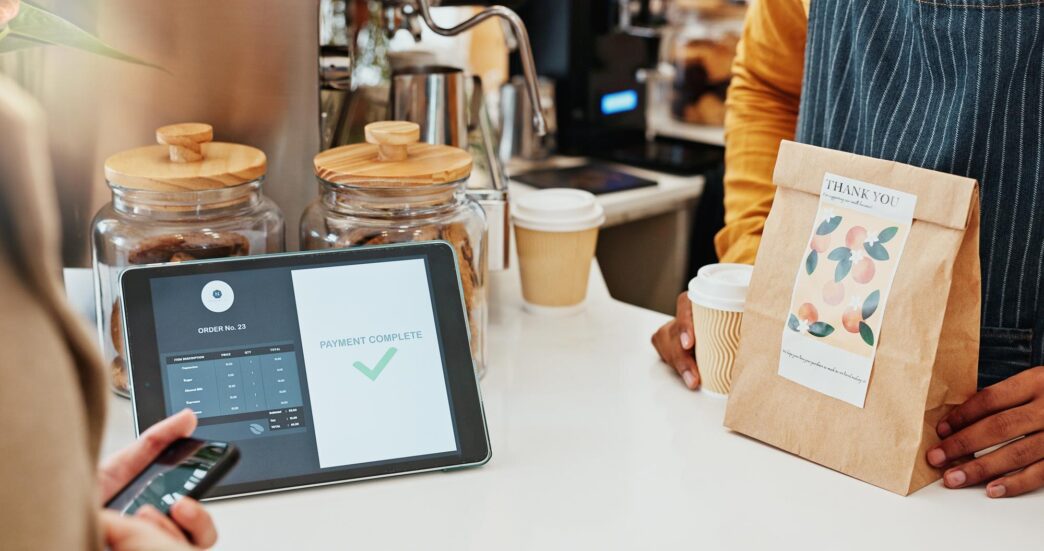Executive Summary
The Trajectory So Far
The Business Implication
Stakeholder Perspectives
In today’s competitive landscape, businesses, particularly those in the restaurant and retail sectors, are discovering that integrating their Point of Sale (POS) systems with online ordering and delivery platforms is not merely a convenience but a critical strategy for unlocking significant profits and operational efficiency. This convergence allows companies to streamline operations, manage inventory in real-time across all channels, and provide a unified customer experience, ultimately catering to the modern consumer’s demand for seamless digital and physical interactions. The shift towards integrated systems is driven by the imperative to reduce manual errors, gain deeper insights into sales data, and expand market reach beyond traditional brick-and-mortar limitations, ensuring sustained growth and adaptability in an increasingly digital-first economy.
The Imperative of Integration: Why Businesses Need It Now
The past few years have dramatically accelerated consumer reliance on online ordering and convenient delivery services. For businesses, this means that disjointed systems — one for in-store sales, another for online orders, and yet another for delivery logistics — are no longer sustainable.
Managing these disparate platforms leads to inefficiencies, potential data inaccuracies, and a fragmented customer experience. An integrated POS system centralizes all these functions, providing a single source of truth for sales, inventory, and customer data.
This holistic approach not only simplifies management for business owners but also enhances the speed and accuracy of order fulfillment. It ensures that inventory levels are consistently updated across all sales channels, preventing overselling and improving customer satisfaction.
Key Features of Integrated POS Systems
To truly unlock profits and operational excellence, an integrated POS system must offer a robust set of features designed to handle the complexities of modern commerce.
Seamless Order Flow
A core benefit is the ability for online orders to flow directly into the POS system, then automatically to the kitchen display system (KDS) for restaurants or fulfillment queue for retail. This eliminates manual order entry, reducing errors and speeding up preparation times.
Customers can place orders through a branded website, mobile app, or third-party marketplaces, with all data converging in one central hub. This creates a smooth journey from customer click to product delivery or pickup.
Centralized Inventory Management
Real-time inventory synchronization is paramount for businesses selling products both online and in-store. An integrated system automatically adjusts stock levels as sales occur across any channel.
This prevents frustrating situations like customers ordering an out-of-stock item online or store staff selling an item reserved for an online order. It provides accurate stock counts, aiding in reordering and reducing waste.
Unified Customer Data
By capturing customer information from every interaction point, businesses can build comprehensive profiles. This data includes purchase history, preferences, and loyalty program participation.
Unified customer data enables personalized marketing campaigns, targeted promotions, and improved customer service. Understanding purchasing patterns helps businesses tailor offerings and enhance the overall customer journey.
Integrated Payment Processing
An integrated system supports a wide array of payment options, from traditional card payments to mobile wallets and online payment gateways. All transactions are securely processed and recorded within the POS.
This simplifies reconciliation, reduces transaction fees through preferred processors, and ensures PCI compliance. It also offers customers flexibility and convenience, which are crucial for conversion.
Delivery Management Tools
Whether using in-house drivers or third-party logistics, an integrated POS can offer tools to manage the delivery process. This includes driver assignment, route optimization, and real-time tracking for customers.
Some systems allow for direct integration with popular delivery platforms, simplifying the process of accepting and managing orders from multiple sources. This ensures timely and efficient delivery, a key factor in customer satisfaction.
Robust Reporting and Analytics
Access to comprehensive sales data, inventory reports, and customer insights is vital for strategic decision-making. Integrated POS systems provide detailed analytics across all sales channels.
Businesses can identify peak selling times, popular products, customer acquisition costs, and marketing campaign effectiveness. These insights enable informed adjustments to menus, pricing, staffing, and promotional strategies.
Top Contenders in the Integrated POS Market
Several leading POS providers have developed powerful integrated solutions tailored to various business needs.
Toast
Specifically designed for restaurants, Toast offers an end-to-end platform that includes online ordering, delivery management, kitchen display systems, and robust reporting. Its hardware is built to withstand kitchen environments, and its software is highly intuitive for restaurant staff.
Lightspeed
Lightspeed serves both retail and restaurant businesses with powerful e-commerce integrations. It excels in inventory management, multi-location support, and detailed analytics, making it suitable for growing businesses looking for scalability.
Square for Restaurants/Retail
Square provides user-friendly and scalable POS solutions for various business types. Its ecosystem includes online stores, payment processing, delivery integrations, and loyalty programs, making it an accessible option for small to medium-sized businesses.
Shopify POS
Primarily an e-commerce platform, Shopify’s POS system is ideal for retailers who want to seamlessly connect their online store with their physical storefront. It offers excellent inventory sync, customer management, and sales reporting across both channels.
Clover
Clover offers a versatile, app-based POS system that can be customized with various integrations for online ordering and delivery. Its flexible hardware and extensive app marketplace make it adaptable to many different business models.
Choosing the Right System: Critical Considerations
Selecting the optimal integrated POS system requires careful evaluation of several factors unique to each business.
Business Type and Size
Consider whether the system is tailored for restaurants, retail, or a hybrid model. Scalability is crucial; the system should be able to grow with your business, supporting multiple locations or increased transaction volumes.
Ease of Use and Training
An intuitive interface reduces staff training time and minimizes operational errors. A system that is easy for employees to learn and use will lead to higher adoption rates and smoother daily operations.
Pricing Structure
Evaluate the total cost of ownership, including hardware, software subscriptions, and transaction fees. Some systems offer tiered pricing based on features or sales volume, so choose a plan that aligns with your budget and needs.
Customer Support
Reliable and responsive customer support is essential, especially for mission-critical systems. Look for providers offering 24/7 support, comprehensive knowledge bases, and dedicated account managers.
Integration Capabilities
Beyond online ordering and delivery, consider if the POS integrates with other essential business tools, such as accounting software, CRM systems, or marketing platforms. A truly integrated ecosystem enhances overall business intelligence.
Security Features
Data security is non-negotiable. Ensure the system offers robust encryption, fraud protection, and PCI compliance to protect sensitive customer and business information.
Maximizing ROI with an Integrated System
Implementing an integrated POS is just the first step; maximizing its return on investment (ROI) requires strategic utilization of its capabilities.
Optimize Online Menus/Catalogs
Ensure your online offerings are attractive, easy to navigate, and feature high-quality images and clear descriptions. Regularly update specials and promotions to keep customers engaged.
Leverage Data for Personalization
Utilize the unified customer data to create targeted marketing campaigns, personalized recommendations, and effective loyalty programs. This fosters customer retention and encourages repeat business.
Streamline Delivery Logistics
Continuously refine your delivery processes, whether in-house or third-party, to ensure speed and accuracy. Provide customers with real-time tracking and clear communication to enhance their experience.
Monitor Performance Metrics
Regularly review the detailed reports and analytics to identify trends, popular items, and areas for improvement. Use these insights to make data-driven decisions that optimize operations and boost profitability.
The integration of POS systems with online ordering and delivery is no longer a luxury but a fundamental requirement for businesses aiming to thrive in the digital age. By centralizing operations, enhancing customer experiences, and leveraging data-driven insights, businesses can significantly improve efficiency, reduce costs, and unlock new avenues for revenue growth, positioning themselves for long-term success in a rapidly evolving market.







